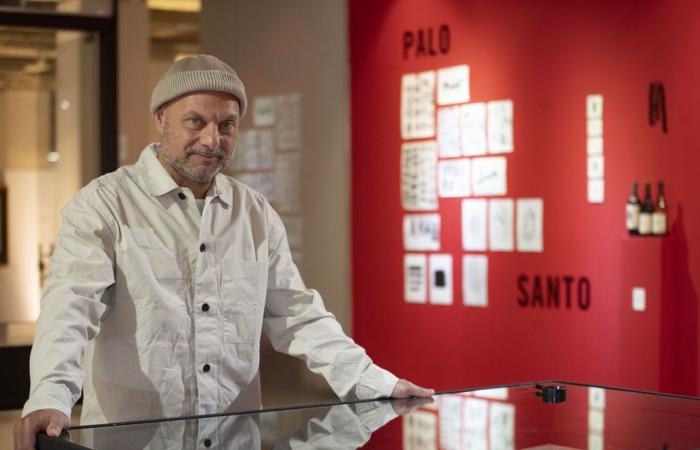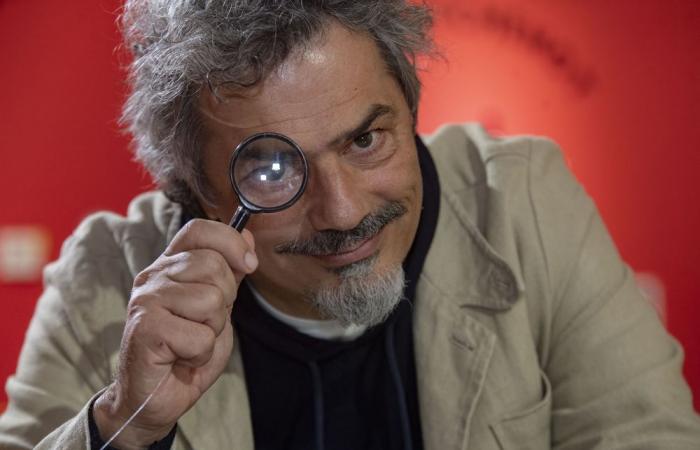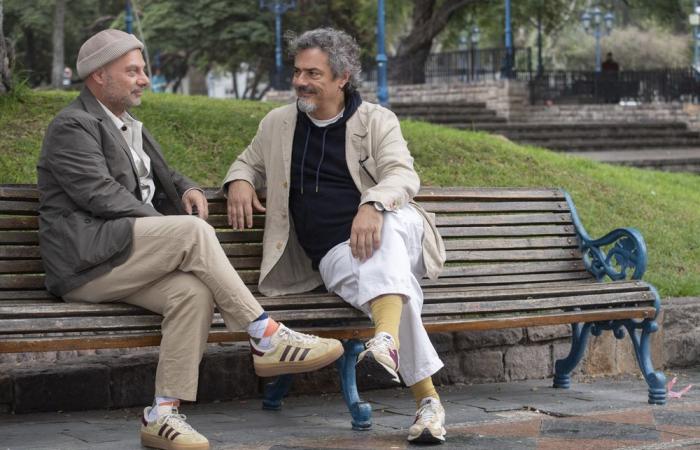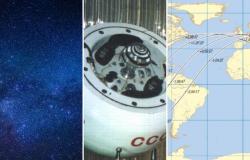006.jpg
Boldrini & Ficcardi, a design studio specialized in wine labels. Photo: Ramiro Gómez.
-What is the work process in the design of a wine label?
Victor: -Primero summon us a winery, because the work we do are always on request, and explain what they need to develop, if a new product or an existing one. From there comes a series of guidelines, ideas and possible graphic paths that we then evaluate with the client to deepen any of them, until we reach the final product.
Gato: -Ell project has a different style definition. We are quite eclectic and that represents us as a study and as designers.
-What transformations did the design have since they started -in the decade of the ’90s -so far, as far as their work is concerned?
Victor: -We now have more speed to see plasma ideas and have more technological tools. when we started there was no digital photography, we had to draw fonts or coloring by hand, for example. The process was thought separately and the final result was seen once printed. At that time it was essential to know the trade.
Gato: -From 1994, which we design our first wine label, the processes at some point have been the same: contact with the client, creativity, sketch development and ending in printing and wine. The difference is that before that was manual, slow, manual and very technical. When the Mac came out we could see a quantity of typefaces and a mechanization of the processes that led us to boost the possibilities through different software.
014.jpg
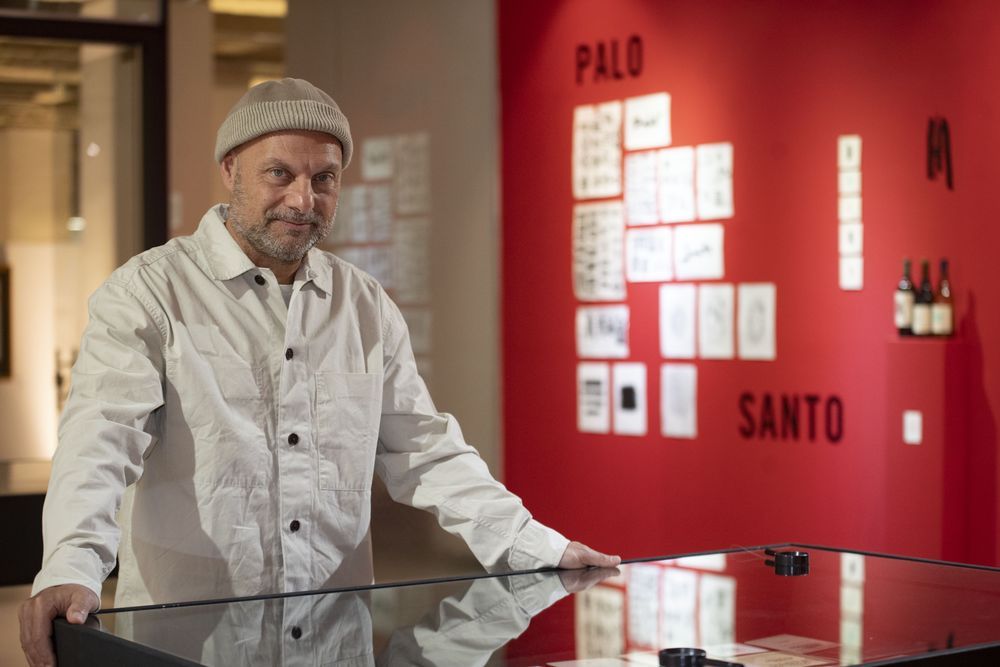
Gato Ficcardi. Photo: Ramiro Gómez.
-How did they meet?
Victor: -Study, in the Faculty of Design of the National University of Cuyo.
Gato: -In reality we met in a design bar called Barcelona, on Belgrano Street and Martín Zapata in the city of Mendoza. We had seen ourselves in the Faculty but there we remained to meet for the first time to do a practical job.
Victor: -It was a long time ago (laughs). From the second year we studied together and became friends. We received ourselves at the same time as well.
-When did you decide to create the Boldrini & Ficcardi study?
Victor: -We began as a study doing a job together in 1991, when we were still students. The first thing we did was a cardboard for the price in Australes of a wine for wine. Years later we made the first label for Santa Isabel, a wine from Nieto Senetin.
Gato: -From then we don’t stop. It had a lot to do with the development of the industry, especially in the external market. We never imagine dedicating ourselves to the design of wine labels and on the other hand there was no such marked development of viticulture. There were few wines brands. They had had wineries with family tradition that worked in the external market and took the European graphic style a lot.
Victor: -In the 2001 crisis we were very competitive internationally in relation to the price and that made Argentine wine open to the world.
-How many labels have developed throughout their career and with which countries have worked in graphic design for wines?
Gato: -I calculate that we have about 10,000 designed labels that have gone through a selection process, but in bottles the truth is that I don’t know. They are many. Countries? Argentina, Chile, Bolivia, Brazil, Mexico, the United States, Italy, Spain, France, Germany, Ukraine and Japan.
-How did the design field open to become an international reference study in the creation of labels?
Gato: -In our beginnings we travel a lot to wine fairs to know who were behind the wine projects and wineries. Now we do it too.
Victor: -When we started with the study Most labels were made by designers of Buenos Aires. Then there was a long time where the labels we made were not in Argentina but were for wines that were exported or were from other countries.
019.jpg
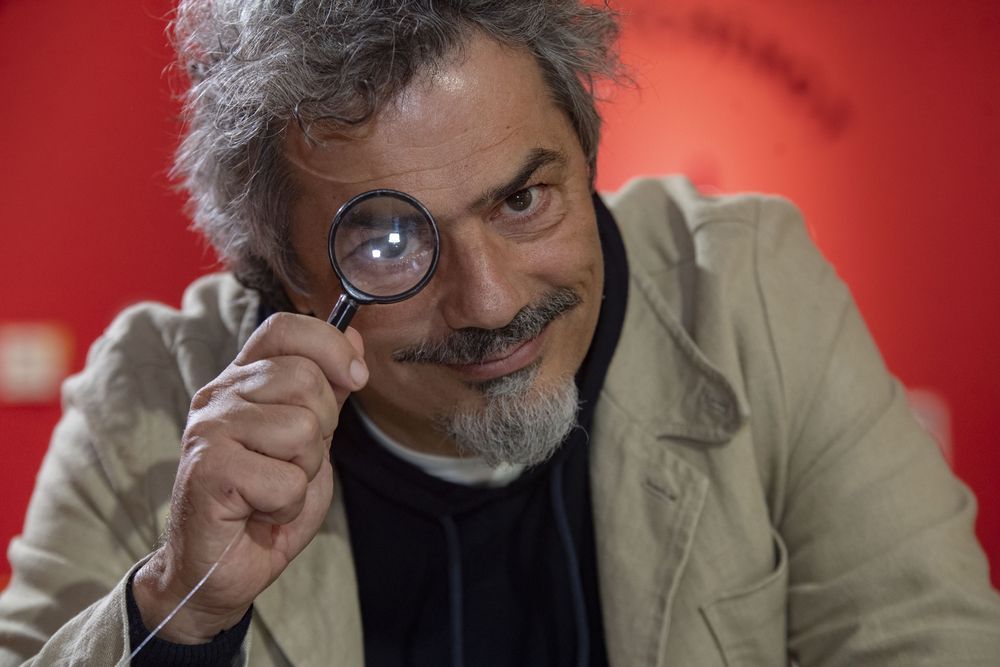
Pupo Boldrini. Photo: Ramiro Gómez.
-What challenges do they consider when addressing a commission?
Gato: -Our challenge always depends on what the client wants in commercial terms, if he wants to update or expand his product portfolio. Also of the competition, because I think it is the only item in a supermarket, where you have 300 options with the same capsule, the same cork and a similar drink. The claims of our client are transferred to our work, which can be from renewing the image of a centennial winery to create something from scratch. In those different situations our mission is to solve problems so that in that alliance we do well. Personally, I think it has to do with accompanying the times and context of the industry.
-What point is the label that sells a wine when buying?
Gato: -I’m reading a report on wines consumption and 80% of packaging is responsible for the promotion of sale, while 60% of the decisions are made in the gondola. In addition, 55% of consumers are willing to pay more for products that try to generate a positive impact and 41% acknowledge that the packaging buys something again. Another striking fact is that 90% of the packaging redesign does not increase sales.
Victor: -The label represents a promise but ends up being a conjunction of other variables. It also affects the price-quality relationship and sympathy for certain aesthetics or practices of the company: it is like the poster of a film. There are fashions in relation to labels and wines, especially those that are young or modern, so high -end wines usually handle a more neutral record.
-Would you like to have your own wine?
Gato: -We have it but it is not on sale so as not to compete with our customers.
Victor: –Of the houseis called.
-What does that label have?
Gato: -A mono-anglo: half mono, half horse because we are both mono in the Chinese and Sagittarius horoscope in the zodiac.
-Who have been your great references in the world of design?
Victor: -We have several. Of the University, Luis Sarale and on the outside, Daniel Bertalot, Santiago Zemma and Lucila Ruiz Moreno.
Gato: -Depend of the time as well. Julio School has also been very important to us, as well as Spanish, English and French design.
-What projects are currently working?
Gato: -We are working in a new winery in Salta, in two projects in Bolivia, in a great cellar in Chile, in a mini project of a very crazy brand, in an without alcohol wine and for an importer from the United States.
Victor: -In addition we are going to start with the renewal of a portfolio of a traditional Mendoza winery and we have several labels in the development stage. We are also with the design of a Jerez label.
020.jpg
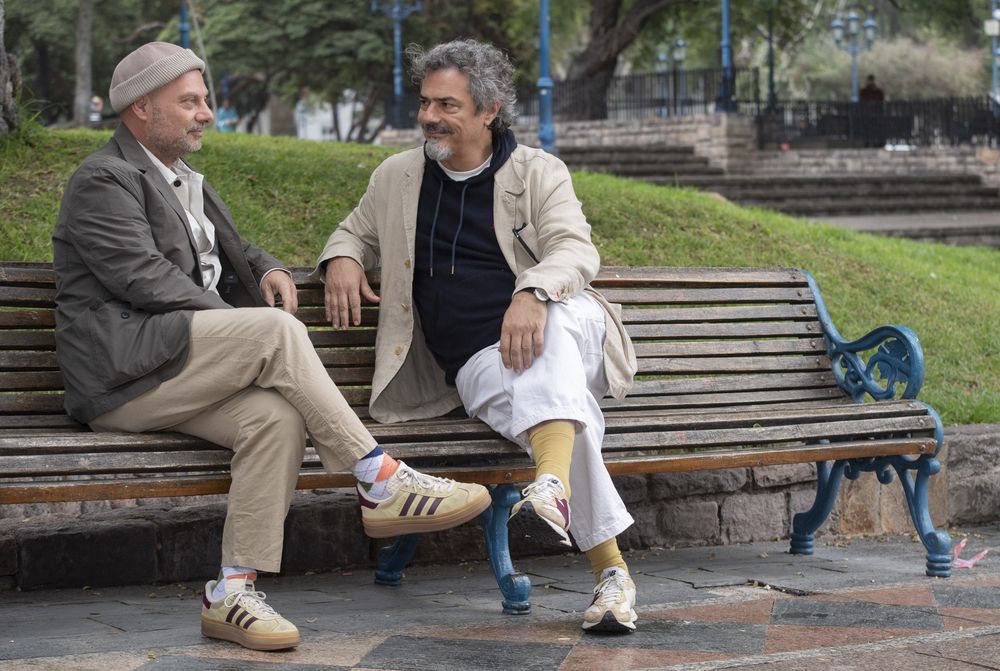
Boldrini & Ficcardi meters from MMAMM, where they recently made an exhibition of wine labels. Photo: Ramiro Gómez.
Ping pong with Boldrini & Ficcardi
-A pending dream together? Edit our book as a study.
-What less enjoy your work? Committee meetings, that is, all intermediate processes between those who make the decision to reach the final result.
-What advice would you give the new generations of designers? That they commit to the object and analogue world, that they think, draw and study.
-Do you think something? Cat: -Disks of vinyl, books and images of ugly things. Victor: -Servillatas with the logos of the bars that I keep in books.
-Are Marqueros? And in that case, what brands do they represent for their design or concept? Cat: -Yeah. I like the Technics, Adidas and Audi brand. Victor: -I like some companies that produce in Argentina, such as Colbo or Piedravlanca.
-Serie current or recent movie you liked? Victor: -“Parthenope”, Paolo Sorrentino’s last film. Gato: -“The triangle of sadness.”
-A wine zone? Victor: -San Rafael and Agrelo. Gato: -The consultation, the origin of my family.
Make a Mark
Make A Mark is an innovation project in packaging design for luxury products, food, beauty and fragrances. In 2020, in full pandemic, Boldrini & Ficcardi was selected as the only Argentine representative, among 18 studies of the globe, to create a label that was then taken to a book. “As at that time the consumption of wine increased so much, we chose a phrase from Charly García to generate awareness, which we combine with an aesthetic of posters and reliefs:”When the world throws down, it is better not to be tied to anything“The message of this collage that conquered the eyes of the jury is an experience that they treasure, at a time where uncertainty changed the history of the world.



